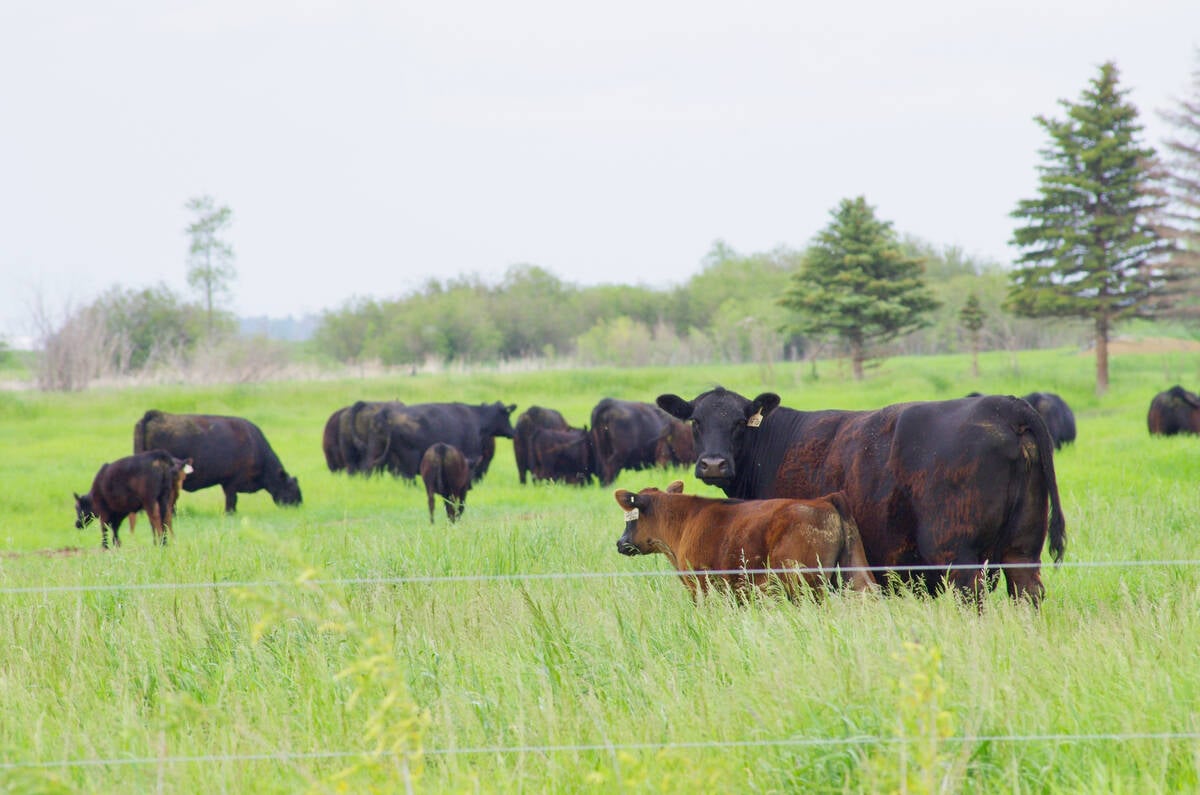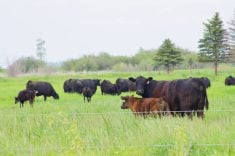CONSORT, Alta. – It is a feeding technique that makes the cows do the work.
“Swath grazing is a good alternative to handling bales and manure,” said Ross Hutchison, during a feed enhancement field day held near Consort.
Most of the farmer’s work lies in planning and management, and is done well before cows are turned into a field for winter feeding, said the Alberta Agriculture forage specialist.
Swath grazing has been around for a number of years, but is growing in popularity. More producers see it as an effective way to extend winter grazing and reduce feed costs for mature cows.
Read Also

Tick research from the University of Manitoba focuses on insects and testing
Manitoba researchers are looking into the effects of tick and fly disease in cattle.
“Some people like it, some people don’t,” said Hutchison.
He said manure distribution is better because as cattle graze along the windrows, they also deposit the manure in rows. This is an improvement over collecting manure in an enclosed pen or feeding area.
Most producers prefer using annual cereals like barley or oats sown at the end of June, alone or as a mix. Crops should be sown about 20 percent thicker than normal.
The grain is swathed in September at the soft dough stage and left in the field while the weather turns cold.
“It’s like throwing it in the fridge,” said Hutchison.
Smooth awned barley varieties are recommended over rough types that may lodge in a cow’s mouth and cause sores.
Some people add fall rye to the mix. It does not stockpile as well as spring cereals, but provides the cattle with green grass to graze in the fall and early spring.
Weeds can be controlled with Buctril M, but there is a 30-day withdrawal time that must be observed before turning cattle out.
The system works best with 1,200-pound dry cows. They consume about 60 pounds each of swath per day. If the cows were fat going into the season, the extra flesh will come off while those in good condition maintain their weight.
It should hold them into their third trimester of pregnancy.
Hutchison said the swaths are not as nutritious or high yielding as greenfeed, but still provide a good return. Feed costs are between 40 and 83 cents per head per day on swaths.
Protein levels are between eight and 10 percent and the feed holds its nutritional value. Nitrate poisoning is rarely a problem, but samples should be tested for nitrogen levels and nutritional value.
Nitrate toxicity is unlikely if the grain is swathed the day after a frost.
The program can start when winter feeding normally begins. However, it is a good idea to wait until there is snow cover on frozen ground. Otherwise, fields get muddy and too much feed is wasted.
Cattle will break through up to 50 centimetres of snow to reach the swaths. Some recommend turning a horse out with the cattle if the snow crusts over too much, because horses are more successful at breaking through the snow crust.
Cattle lick the snow as they eat, so it is also a water source.
If the temperature drops below minus 30, supplemental feed is recommended because the cattle may not be willing to walk far or they won’t be able to break through snow.
Fields are divided into small enclosures with a portable electric fence. There should be enough feed available for seven days. Cattle tend to respect the fence and being enclosed encourages them to clean up the swaths.
Disease problems are reduced because the cattle are moved regularly.
Hutchison recommends trying the program on 10 acres in the first year rather than going for a full program.
“Things are pretty good in livestock, so now is the time to make adjustments. When times get tough, you’ll be in the driver’s seat.”

















